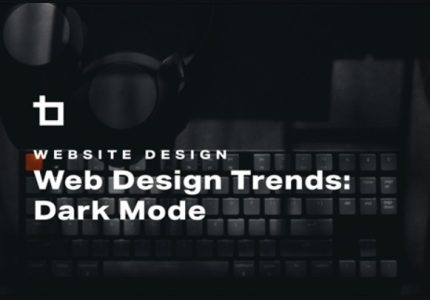Benefits of Free Website Design
Free website design offers a cost-effective way for individuals and small businesses to establish an online presence without financial burden. It provides access to professional-looking templates and tools that simplify the creation process, enabling users to launch their websites quickly. Additionally, free designs often come with user-friendly features that help enhance website functionality and user experience, making it an attractive option for those starting out or on a tight budget.
Cost Savings
Free website design offers numerous benefits, particularly in terms of cost savings for businesses and individuals. By utilizing free design tools and templates, users can create professional-looking websites without the need for expensive software or hiring costly web developers.
This approach significantly reduces initial setup costs, making it accessible for startups, small businesses, and personal projects with limited budgets. Additionally, free website design platforms often provide user-friendly interfaces that simplify the customization process, saving both time and money spent on technical assistance.
Moreover, the cost savings extend to ongoing maintenance and updates, as many free tools include built-in features that support easy content modifications without additional expenses. Overall, opting for free website design is an effective strategy to achieve a strong online presence while keeping costs low.
Ease of Access for Beginners
Free website design offers numerous benefits, especially for beginners looking to establish an online presence without a significant financial investment. It provides an accessible starting point for those with limited technical skills, allowing them to create a professional-looking website with minimal effort.
One of the key advantages is ease of access. Beginners can easily navigate and use free website design tools and templates, often without requiring coding knowledge. These platforms typically feature intuitive drag-and-drop interfaces that simplify the process of customizing layouts and content.
Additionally, free website design options often include a wide variety of templates tailored to different industries and styles, enabling users to find a design that suits their needs quickly. This flexibility helps newcomers to build attractive, functional websites without the need for specialized design skills.
Overall, the combination of cost-effectiveness and user-friendly features makes free website design an excellent choice for beginners eager to establish and grow their online presence effortlessly.
Quick Setup Time
Free website design offers numerous advantages for individuals and small businesses looking to establish an online presence. It allows users to create and launch a professional-looking website without incurring significant costs, making it accessible to those with limited budgets. Additionally, free design platforms often provide user-friendly templates and tools that simplify the customization process, enabling users to develop their site quickly and efficiently.
One of the key benefits is the quick setup time. With pre-designed templates and intuitive drag-and-drop interfaces, users can have a fully functional website up and running in a short period. This rapid deployment is ideal for businesses aiming to establish their online presence swiftly or for personal projects looking to share information without delays. Overall, free website design combined with quick setup times supports efficient, cost-effective online development for all users.
Wide Range of Templates
Free website design offers numerous advantages, making it an excellent choice for individuals and small businesses looking to establish an online presence without extensive costs. Access to a wide range of templates allows users to quickly find a design that suits their brand and style, saving time and effort in the creative process. These templates are often customizable, providing flexibility to tailor the website to specific needs and preferences. Additionally, free website design platforms typically include user-friendly interfaces, enabling those with little or no coding experience to build professional-looking websites efficiently. Overall, the combination of cost savings, diverse template options, and ease of use makes free website design an attractive solution for many users seeking to launch or enhance their online presence.
Popular Free Website Design Platforms
Creating a professional and attractive website doesn’t have to be expensive, thanks to a variety of popular free website design platforms available today. These platforms offer user-friendly tools and customization options that enable users of all skill levels to build their own websites quickly and efficiently. Whether for personal projects, small businesses, or portfolios, free website builders provide accessible solutions to establish an online presence without financial investment.
Wix
Wix is one of the most popular free website design platforms that allows users to create stylish and professional websites without extensive coding knowledge. It offers a user-friendly interface with drag-and-drop tools, making it accessible for beginners and small business owners alike. Wix provides a variety of customizable templates tailored to different industries and purposes, enabling users to quickly set up their online presence. The free plan includes essential features such as hosting, a Wix subdomain, and access to a broad selection of design elements, making it an excellent choice for those seeking cost-effective website solutions.
- Extensive collection of free templates for various industries
- Intuitive drag-and-drop website editor
- Built-in SEO tools to improve online visibility
- Mobile-responsive designs ensuring compatibility across devices
- Free hosting with Wix subdomain included
- Easy integration of multimedia, social media, and e-commerce features
Weebly
Weebly is a popular free website design platform that offers user-friendly tools for creating professional-looking websites without coding experience. It provides a drag-and-drop editor, making it easy for users to customize their sites with various templates and design elements. Weebly also includes free hosting, mobile responsiveness, and integrated features such as e-commerce, contact forms, and social media integration, making it an ideal choice for small businesses, bloggers, and personal projects seeking a cost-effective web presence.
WordPress.com
WordPress.com is one of the most popular free website design platforms available today. It offers users an easy-to-use interface with a wide range of customizable themes and templates, making it accessible for beginners and professionals alike. The platform provides essential features such as built-in blogging tools, responsive design options, and a variety of plugins to enhance website functionality without any cost. With its large community support and extensive resources, WordPress.com is an excellent choice for creating a professional-looking website for free.
Strikingly
Strikingly is a popular free website design platform known for its user-friendly interface and modern templates, making it easy for users to create professional-looking websites without coding skills. It offers a range of customizable features tailored for personal projects, portfolios, and small businesses. The platform provides free hosting and a straightforward drag-and-drop editor, allowing users to quickly build and publish their websites. Additionally, Strikingly’s focus on one-page website designs makes it ideal for simple, impactful online presence creation. While free plans come with certain limitations, such as display of branding and restricted features, Strikingly remains a top choice for those seeking an accessible and aesthetically pleasing website building solution at no cost.
Features Offered by Free Website Builders
Free website builders provide a variety of features that make creating a professional website accessible and straightforward for beginners. These tools typically include customizable templates, drag-and-drop editors, and essential hosting services, allowing users to design and publish their sites without any coding knowledge. Additionally, they often offer built-in SEO tools, mobile responsiveness, and free domain options, making it easier to establish an online presence hassle-free. Such features empower individuals and small businesses to launch appealing websites quickly and cost-effectively.
Drag-and-Drop Editor
Free website builders often come equipped with a variety of features that make creating a professional website accessible to everyone. One of the most prominent features is the drag-and-drop editor, which allows users to easily customize their site layout by simply selecting and placing elements on the page without any coding knowledge. These editors typically include a wide range of pre-designed templates and widgets, enabling users to quickly build pages with images, text, videos, and contact forms. Additionally, free website builders usually provide basic SEO tools to optimize search engine rankings and mobile-responsive designs to ensure the website looks great on all devices. Other useful features include built-in hosting, domain-less options, and easy integration with social media platforms, making it convenient for users to publish and manage their sites effortlessly.
Responsive Design
Free website builders offer a variety of features that make creating and managing a website accessible to everyone. These platforms typically provide user-friendly interfaces, drag-and-drop editors, customizable templates, and integrated hosting. Many free builders also include basic SEO tools, analytics, and social media integrations to help enhance online visibility. Additionally, they often support multimedia content like images, videos, and forms, enabling users to create interactive and engaging websites without coding skills.
Responsive design is a fundamental feature in free website builders, ensuring that websites automatically adapt to different screen sizes and devices. This means a site built with a responsive design will look great on desktops, tablets, and smartphones, providing a seamless user experience. Responsive features are essential for maximizing accessibility and engagement, as an increasing number of users access websites through mobile devices. Free website builders that include responsive design tools allow users to preview and optimize their sites across various devices, making it easier to create professional, versatile websites without technical expertise.
Basic SEO Tools
Free website builders provide a range of features that make website creation accessible and straightforward for beginners. These platforms typically include customizable templates, drag-and-drop editors, and hosting services, allowing users to design their sites without coding knowledge. Basic SEO tools are usually integrated as well, helping improve search engine visibility through features like keyword optimization, meta tag editing, and sitemap generation. Overall, free website builders offer essential tools to establish a professional online presence with minimal cost and effort.
Built-in Analytics
Free website builders typically come with a range of features that make creating and managing a website accessible for users without advanced technical skills. These platforms often include customizable templates, drag-and-drop editors, and hosting services, allowing for quick and easy site development. They also usually provide essential tools such as contact forms, image galleries, and social media integrations to enhance website functionality and user engagement.
Built-in analytics is a key feature offered by many free website builders, providing users with valuable insights into website performance. These analytics tools track metrics like visitor numbers, page views, traffic sources, and user behavior, enabling site owners to understand their audience better and optimize their content accordingly. Having integrated analytics simplifies the process of monitoring website success without needing third-party solutions, making it an excellent feature for small businesses and individual users aiming to improve their online presence.
Considerations When Choosing Free Website Design Services
When exploring free website design services, it is essential to consider various factors to ensure you select the best option for your needs. Evaluating the features, customization capabilities, and support offered by these services can help you create a professional and functional website without unnecessary hassle. Understanding the limitations and benefits of free tools enables you to make informed decisions that align with your goals.
Limitations on Customization
When selecting free website design services, it’s important to consider the limitations that may impact your website’s appearance and functionality. Many free platforms offer templates with fixed layouts and limited customization options, restricting your ability to create a unique look or add specific features. These restrictions can affect branding and user experience, especially if you need a highly tailored design. Additionally, free services often place branding or watermarks on your site, which may detract from a professional appearance. Limited access to advanced tools or integrations can also hinder your ability to expand your website as your business grows. It’s essential to weigh these limitations against your goals to determine if a free service aligns with your long-term needs or if investing in paid options might be more beneficial.
Branding Restrictions
When selecting free website design services, it is important to consider potential branding restrictions that may impact your site’s individuality and consistency. Many free platforms impose limitations on custom branding elements, such as logos, color schemes, and overall design flexibility, which can hinder your ability to establish a unique brand identity. These restrictions might also include forced display of platform ads or watermarks, potentially distracting visitors from your content and diminishing a professional appearance.
Additionally, evaluate whether the free service allows sufficient customization options to align with your branding guidelines. Limited templates and design tools can restrict creativity and make it difficult to differentiate your website from competitors using similar free templates. Consider the long-term impact on branding and whether the service offers an upgrade to paid plans for more advanced branding freedoms as your business grows.
Storage and Bandwidth Limits
When selecting free website design services, it is essential to consider storage and bandwidth limitations, as these factors can significantly impact your website’s performance and growth potential. Free platforms often impose restrictions that may affect how much content you can host and how many visitors your site can support without issues.
- Storage Limits: Ensure the service provides sufficient storage for your website’s files, images, and other media. Excessive storage restrictions may force you to upgrade or reduce content quality and volume.
- Bandwidth Restrictions: Check the allowed bandwidth to accommodate your expected traffic. Low bandwidth caps can lead to slow load times or site outages during traffic spikes.
- Growth Flexibility: Consider whether the platform allows easy upgrades to higher storage and bandwidth plans as your website expands.
- Impact on User Experience: Limited bandwidth might result in longer load times, affecting user engagement and SEO rankings.
- Cost of Upgrades: Evaluate the cost and process for moving to a paid plan to avoid unexpected disruptions when your website outgrows free plan limits.
Presence of Ads
When selecting free website design services, it is important to consider whether they include advertisements on your site, as this can impact your brand image and user experience. Free platforms often display ads to compensate for their no-cost offerings, which may distract visitors or appear unprofessional. Additionally, evaluate the customization options available to ensure the service can meet your specific design needs. Consider the limitations in features, storage, and bandwidth, as these can affect your website’s growth and functionality. Always review the terms of service to understand any restrictions or obligations associated with the free plan. Lastly, assess the ease of use and the availability of support to ensure you can efficiently manage and update your website without technical difficulties.
Tips for Designing a Free Website Effectively
Creating a free website offers a fantastic opportunity to establish your online presence without financial stress. To make a lasting impression, effective design is essential. By focusing on user-friendly layouts, clear navigation, and appealing visuals, you can craft a website that attracts and retains visitors. Implementing these tips will help ensure your free website is both functional and visually appealing, setting the stage for success online.
Selecting the Right Template
Choosing the right template is crucial for creating a free website that is both visually appealing and functional. Start by assessing the purpose of your website and identifying the features you need, such as a blog layout, portfolio showcase, or e-commerce capabilities. Look for templates that align with your content and audience, ensuring they offer a clean design that enhances readability and user experience. Consider responsiveness; select templates that are mobile-friendly to accommodate visitors on various devices. Additionally, prioritize templates that are customizable, allowing you to personalize colors, fonts, and layouts without requiring coding skills. Opt for templates with good reviews and support to ensure they are reliable and easily adjustable as your website evolves. Remember, the right template sets a strong foundation for your website’s success, so choose one that aligns with your goals and offers flexibility for future growth.
Creating User-Friendly Navigation
Designing a free website effectively requires a focus on simplicity and clarity to enhance the user experience. Start by choosing a clean and responsive layout that adapts seamlessly to various devices and screen sizes. Use a straightforward color scheme and readable fonts to ensure your content is accessible and visually appealing. Incorporate white space strategically to avoid clutter and make navigation easier for visitors.
Creating user-friendly navigation is essential to keep visitors engaged and help them find information quickly. Organize your menu structure logically, grouping related pages together and using clear labels. Include a prominent menu or navigation bar at the top of each page, making it easy to locate. Utilize dropdown menus to cover subcategories without overwhelming the main navigation. Implement internal links within your content to guide users naturally through your website. Overall, simplicity, consistency, and clarity are key aspects of designing an effective, user-friendly free website.
Optimizing Content for Search Engines
Designing a free website effectively involves balancing visual appeal with user experience to attract and retain visitors. Start with a clean, simple layout that is easy to navigate, ensuring that important information stands out. Use a consistent color palette and clear typography to improve readability and brand recognition. Incorporate high-quality images and concise content to engage users without overwhelming them. Ensure the website is mobile-responsive so it looks great on all devices. Regularly update your design to stay current and relevant, and utilize free tools and templates to keep costs low.
Optimizing content for search engines is crucial to increase visibility and drive organic traffic. Conduct keyword research to identify relevant terms your target audience searches for and incorporate these naturally into your content, headings, and meta descriptions. Use descriptive, keyword-rich titles and headers to improve search engine ranking. Include internal links to related content on your site and external links to authoritative sources to enhance credibility. Focus on creating valuable, original content that answers users’ questions and provides solutions. Lastly, improve website load speeds, optimize images, and ensure proper site structure to enhance overall SEO performance.
Ensuring Mobile Responsiveness
Creating a free website that is both visually appealing and functional requires careful planning and attention to detail. One of the most important aspects is ensuring mobile responsiveness, so your site looks great on all devices. Start by selecting a clean, simple layout that adapts well to different screen sizes. Use flexible grids and scalable images to maintain layout integrity across devices. Prioritize easy navigation with clearly visible menus and buttons that are large enough to tap on smaller screens. Incorporate responsive design frameworks or templates that automatically adjust content based on the device. Test your website on multiple devices and screen sizes to identify and fix any layout issues. Keep your design streamlined to enhance load times and user experience, making sure that your content remains accessible and well-organized whether viewed on a desktop or smartphone. By focusing on mobile-friendly features from the start, your free website can reach a broader audience effectively and professionally.
Transitioning from Free to Paid Plans
Transitioning from free to paid plans is a crucial step for those looking to enhance their free website design and unlock additional features. Moving beyond basic, free options allows for greater customization, improved performance, and a more professional online presence. Understanding this transition helps users make informed decisions to elevate their websites and achieve their goals more effectively.
Reasons to Upgrade
Transitioning from free to paid plans in free website design is a crucial step for businesses and individuals aiming to enhance their online presence. Upgrading allows access to a broader range of features, improved customization, and higher performance, which are vital for creating a professional and effective website.
Reasons to Upgrade from Free to Paid Plans
- Enhanced Customization Options: Paid plans often offer more templates, design flexibility, and advanced editing tools to create a unique website that stands out.
- Increased Storage and Bandwidth: Upgrading provides more space for content and better handling of website traffic, ensuring smooth user experience.
- Improved Website Performance: Paid plans typically include faster hosting, better uptime, and reduced loading times.
- Removal of Ads: Free plans often display the platform’s advertisements; paid plans allow a clean, professional look without unwanted branding.
- Access to Advanced Features: Pay plans often include SEO tools, e-commerce integrations, analytics, and other functionalities essential for growth.
- Greater Support and Security: Paid plans generally come with priority customer support and enhanced security features to protect your website and data.
- Branding and Professionalism: Upgraded plans enable custom domain names and branding options, which boost credibility and trust.
Benefits of Paid Plans
Transitioning from free to paid plans in free website design offers significant advantages that enhance the overall functionality and professionalism of a website. Moving to a paid plan provides access to a wider range of features, including custom domains, advanced design tools, and higher storage capacity, which are essential for creating a polished online presence. Additionally, paid plans often include greater bandwidth and security features, ensuring that your website can handle increased traffic and protect visitor data.
Benefits of paid plans in free website design include removing limitations such as advertisements and branding from the hosting provider, allowing your website to look more professional and credible. Premium plans also offer priority customer support, enabling quicker resolutions to technical issues. Furthermore, investing in a paid plan can improve search engine optimization (SEO), helping your site rank higher in search results and attracting more visitors. Overall, upgrading to a paid plan provides the tools and resources necessary for building a successful, reliable, and visually appealing website.
Migration Tips
Transitioning from free to paid plans in website design requires careful planning to ensure a smooth migration for your users and to maximize the benefits of the paid features. Start by clearly communicating the upcoming changes to your users, highlighting the added value and improvements that come with the paid plans. Provide detailed documentation and support resources to help users understand the differences and benefits. Consider offering a free trial or discounted initial period to encourage users to upgrade without feeling overwhelmed.
When migrating, ensure your website’s infrastructure can handle the new features and increased data requirements. Back up your current site before implementing changes to prevent data loss. Conduct thorough testing of the upgraded website in a staging environment, focusing on user experience, functionality, and performance. Keep the transition seamless by maintaining core features accessible during the migration process, and provide dedicated support channels for users facing issues. Finally, monitor user feedback closely following the upgrade to address concerns promptly and refine the experience accordingly.





